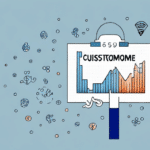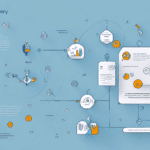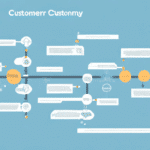Delivering Exceptional Service: How to Ensure Your Customers Receive the Best Experience
As a business owner, providing exceptional customer service is paramount to your organization's success. It not only fosters a loyal customer base but also enhances customer satisfaction and drives your bottom line. This article explores the key aspects of delivering outstanding customer service, including understanding customer needs, cultivating a customer-centric culture, building strong relationships, and continuously improving your service standards.
1. Importance of Customer Service for Business Success
Building a Loyal Customer Base
Exceptional customer service is a cornerstone for building loyalty. According to a Forbes study, 86% of buyers are willing to pay more for a great customer experience. Satisfied customers are more likely to return and recommend your business to others, driving sustained growth.
Differentiating from Competitors
In a saturated market, outstanding customer service sets your business apart. A Qualtrics report highlights that 73% of consumers cite customer experience as an important factor in their purchasing decisions, surpassing price and product quality.
Identifying Areas for Improvement
Feedback from customers serves as valuable insight into areas where your business can improve. By addressing customer concerns and adapting based on feedback, you enhance your offerings and operational efficiency.
2. Benefits of Providing Exceptional Customer Service
Enhanced Customer Satisfaction
Exceptional service leads to higher levels of customer satisfaction. According to the Gartner report, companies that prioritize customer experience see a significant increase in customer loyalty and lifetime value.
Boosting Brand Reputation
A strong reputation for customer service builds trust and credibility. Positive word-of-mouth and online reviews can attract new customers and reinforce your brand's presence in the market.
Increased Sales and Revenue
Satisfied customers are more likely to make repeat purchases and invest in higher-value products or services. This not only drives immediate sales but also fosters long-term revenue growth.
3. Understanding Your Customers: Needs and Expectations
Gathering Customer Insights
Understanding your customers begins with gathering data through surveys, interviews, and analytics. Tools like SurveyMonkey and HubSpot CRM can help collect and analyze customer feedback to identify trends and preferences.
Creating Buyer Personas
Developing detailed buyer personas helps tailor your services to specific customer segments. By representing your ideal customers based on research and real data, you can better address their unique needs and pain points.
Staying Ahead with Industry Trends
Keeping abreast of industry trends ensures your services remain relevant. Attending conferences, subscribing to industry publications, and networking with professionals can provide valuable insights into evolving customer expectations.
4. Creating a Customer-Centric Culture
Aligning Organizational Values
Embedding customer-centric values into your company's mission and vision ensures that every employee prioritizes customer satisfaction. Clear communication of these values fosters a unified approach to service delivery.
Empowering Employees
Providing employees with the authority and resources to make customer-focused decisions enhances their ability to address customer needs effectively. This empowerment leads to quicker resolutions and a more responsive service environment.
Recognizing and Rewarding Excellence
Implementing recognition programs for employees who exemplify outstanding customer service reinforces a culture of excellence. Rewards and public acknowledgments motivate the team to maintain high service standards.
5. Building Strong Customer Relationships
Personalized Interactions
Personalizing customer interactions fosters a sense of connection and loyalty. Utilizing customer data to tailor communications and recommendations demonstrates attentiveness and care.
Consistent Communication
Maintaining regular and transparent communication keeps customers informed and engaged. Whether through newsletters, updates, or direct conversations, consistent communication strengthens the relationship.
Proactive Engagement
Anticipating customer needs and addressing potential issues before they arise shows dedication to their experience. Proactive engagement can prevent dissatisfaction and enhance overall satisfaction.
6. Effective Communication and Training for Customer Service
Developing Communication Skills
Effective communication involves clear messaging, active listening, and empathy. Training programs focused on these skills enable employees to interact confidently and compassionately with customers.
Comprehensive Employee Training
Regular training on customer service best practices, product knowledge, and conflict resolution equips employees with the tools they need to excel. Interactive training methods, such as role-playing, can enhance learning outcomes.
Setting Clear Expectations
Defining and communicating performance standards ensures that employees understand their roles in delivering exceptional service. Regular feedback and performance reviews help maintain these standards.
7. Measuring and Improving Customer Satisfaction
Utilizing Customer Satisfaction Metrics
Tools like the Net Promoter Score (NPS) and Customer Satisfaction (CSAT) surveys provide measurable insights into customer satisfaction levels. According to Net Promoter, tracking NPS helps businesses understand their customer loyalty and identify areas for improvement.
Implementing Feedback Loops
Establishing feedback loops ensures continuous improvement. Regularly collecting and analyzing customer feedback allows businesses to make informed decisions and enhance their service offerings.
Adopting Technological Solutions
Leveraging technology, such as Customer Relationship Management (CRM) systems and AI-driven support tools, can streamline service processes and provide personalized customer experiences. Technologies like Salesforce CRM facilitate effective customer management and service delivery.
8. Dealing with Difficult Customers: Tips and Strategies
Active Listening and Empathy
Listening attentively and demonstrating empathy can de-escalate tense situations. Acknowledge the customer's feelings and concerns to build trust and facilitate a resolution.
Conflict Resolution Techniques
Implementing structured conflict resolution strategies, such as the "Feel-Felt-Found" method, helps address customer grievances constructively. Providing clear solutions and following up ensures issues are resolved satisfactorily.
Maintaining Professionalism
Staying calm and professional, even in challenging interactions, reflects positively on your business. Training employees to manage their responses effectively is crucial for maintaining service quality.
9. Leveraging Technology to Improve Customer Service
Customer Relationship Management (CRM) Systems
CRM systems like Salesforce help manage customer interactions, track preferences, and streamline communication, enhancing overall service efficiency.
Live Chat and AI Support
Implementing live chat and AI-powered support tools provides immediate assistance to customers, improving response times and satisfaction. Solutions like LiveChat offer scalable support options.
Social Media Monitoring
Monitoring social media channels allows businesses to engage with customers in real-time, address concerns promptly, and maintain a positive online presence.
10. Case Studies: Examples of Companies with Great Customer Service
Zappos
Zappos is renowned for its exceptional customer service, offering free shipping, a 365-day return policy, and a customer-centric approach that prioritizes satisfaction over sales. This strategy has resulted in high customer loyalty and strong brand reputation.
Southwest Airlines
Southwest Airlines emphasizes friendly and efficient service, maintaining high employee morale and a focus on customer satisfaction. Their approach has led to consistently high customer retention rates.
Nordstrom
Nordstrom's commitment to personalized service, including flexible return policies and attentive sales assistance, exemplifies their dedication to creating a superior customer experience.
11. Continuous Improvement: How to Keep Improving Your Service Standards
Regularly Analyzing Customer Feedback
Consistently reviewing customer feedback helps identify trends and areas needing improvement. Tools like Hootsuite can assist in managing and analyzing feedback from various channels.
Implementing Strategic Changes
Based on feedback and performance metrics, implementing strategic changes ensures that your service standards evolve to meet customer expectations and industry advancements.
Fostering a Culture of Excellence
Encouraging continuous learning and development among employees promotes a culture of excellence. Providing opportunities for professional growth ensures that your team remains motivated and capable of delivering top-tier service.
Conclusion
Delivering exceptional customer service is essential for business success. By understanding your customers' needs, fostering a customer-centric culture, building strong relationships, effectively training your employees, measuring satisfaction, addressing challenges, leveraging technology, learning from industry leaders, and committing to continuous improvement, you can ensure that your customers receive the best possible experience.




















